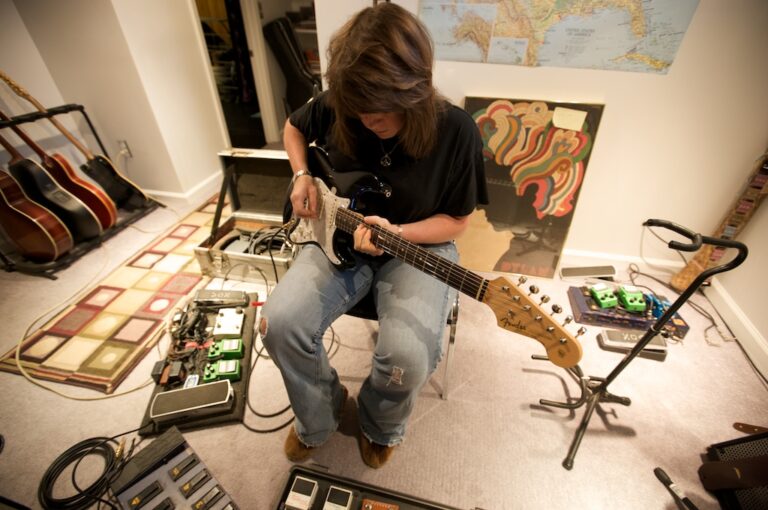Introduction:
Are you feeling a bit frustrated with your blues guitar journey? Don’t worry, you’re not alone. Learning to play the blues can be a bit tricky, especially if you’re struggling to find the right approach. But fear not, because I’ve got some fantastic news for you: with a few quick and easy guitar lessons, you’ll be jamming out those blues tunes faster than you ever thought possible!
I remember when I first started learning the blues. I was a bit overwhelmed by all the different techniques and complex chord progressions. It seemed like a distant dream to be able to play like my guitar heroes. However, through years of trial and error, I’ve discovered some tried-and-true methods that will help you speed up your blues guitar journey. So, let’s dive right in and unlock the secrets to playing the blues in half the time!
I. The Foundation of Blues Guitar:
A. Understanding the 12-bar blues progression:
The 12-bar blues is the backbone of blues music, and grasping its structure is essential for any blues guitarist. It may sound intimidating, but trust me, it’s not as complicated as it seems. Picture this: imagine you’re sitting at a cozy blues club, and the band starts playing. What you’re hearing is most likely a 12-bar blues progression. It’s a pattern of chords that repeats throughout the song, giving it that unmistakable bluesy vibe.
To get started, familiarize yourself with the basic chord progression: I-IV-V. In the key of E, for example, you’d play the chords E7, A7, and B7. Feel free to experiment with different voicings and variations to find your own unique sound.
B. Mastering essential blues chords:
Now, let’s talk about the chords that give the blues its soulful character. You’ll encounter both open and barre chords in blues music, and learning them will give you a solid foundation. Practice common open chords like E7, A7, and B7, as well as barre chords such as the A7 shape barre chord and the E7 shape barre chord. Remember, Rome wasn’t built in a day, so take your time and gradually build your chord vocabulary.
Here’s a little anecdote for you: When I first started learning barre chords, my fingers felt like they were going through a mini workout. But with persistence and daily practice, they eventually became second nature. So, don’t get discouraged if it feels challenging at first. Trust me, your fingers will thank you later!
C. Developing a solid sense of rhythm:
One of the key ingredients that make blues music so captivating is its irresistible groove. To capture that bluesy rhythm, focus on developing your sense of timing and playing with a solid, steady beat. You can use a metronome or play along with blues backing tracks to hone your timing skills.
Here’s a little trick I discovered along the way: tap your foot or bob your head to the beat while you play. This physical connection to the rhythm can help internalize the groove and make your playing sound more authentic. So, find that groove, let it sink into your soul, and before you know it, you’ll be jamming with the best of them.
Stay tuned for part two, where we’ll explore some quick and easy blues techniques that will take your playing to the next level. Keep that guitar in your hands and keep those bluesy dreams alive!
How to Play 12 Bar Blues
If you are an intermediate guitar student, be sure to check out the following three part series on “How to Play 12 Bar Blues.”Enjoy!
Kelly Richey GUITAR LESSONS:
👉: http://guitarlessonsbykellyrichey.com – Take One-on-One Guitar Lessons
👉: https://truefire.com/h1809 – Join Kelly Richey’s TrueFire Cutting Edge Channel for $5 per month
Check out this blog post – Don’t Just Practice – Learn to Play!






